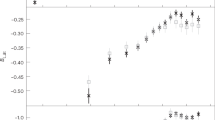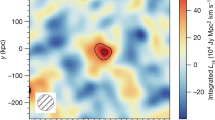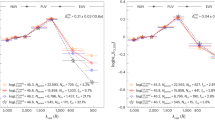Abstract
CONSIDERABLE attention has been recently devoted by various investigators to the explanation of the observed contours of stellar absorption lines. There are many physical factors that contribute to the formation of the contour. The most important are: (1) the abundance of the absorbing atoms in the gas, (2) the Stark effect, and (3) Doppler effects due to the rotation of the stars. We are here concerned with the first of these, which is usually designated as ‘natural widening’ of spectral lines. H. N. Russell and others have shown that this type of broadening is particularly important in the stars because of the large number of absorbing atoms present in a stellar reversing layer. It is responsible for the enormous widths of the H and K lines of Ca+ in the later spectral types.
This is a preview of subscription content, access via your institution
Access options
Subscribe to this journal
Receive 51 print issues and online access
$199.00 per year
only $3.90 per issue
Buy this article
- Purchase on Springer Link
- Instant access to full article PDF
Prices may be subject to local taxes which are calculated during checkout
Similar content being viewed by others
Author information
Authors and Affiliations
Rights and permissions
About this article
Cite this article
STRUVE, O., ELVEY, C. Stellar Absorption Lines. Nature 125, 308–309 (1930). https://doi.org/10.1038/125308a0
Issue Date:
DOI: https://doi.org/10.1038/125308a0
Comments
By submitting a comment you agree to abide by our Terms and Community Guidelines. If you find something abusive or that does not comply with our terms or guidelines please flag it as inappropriate.



